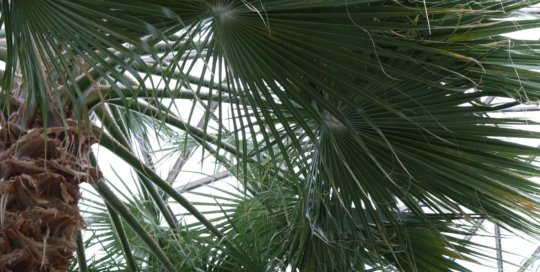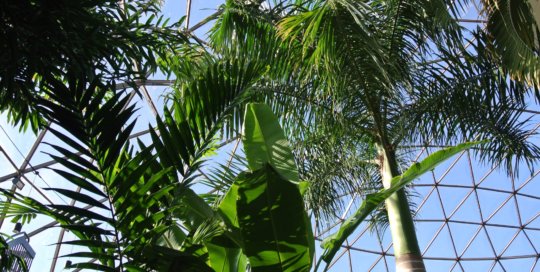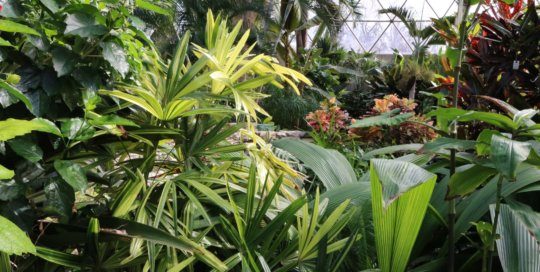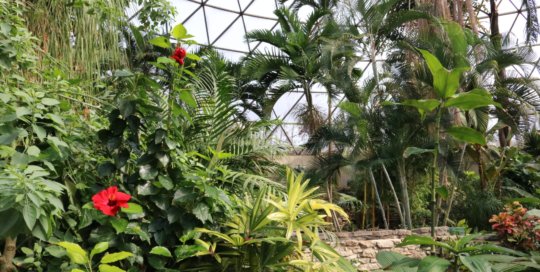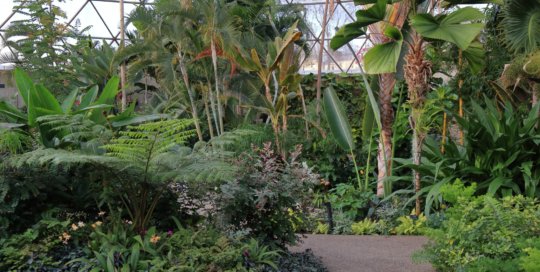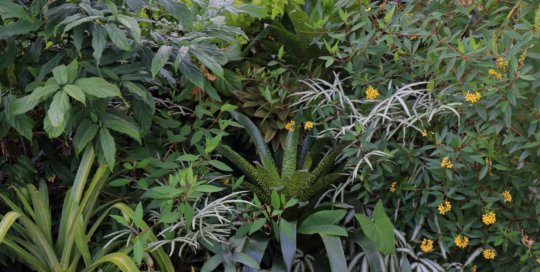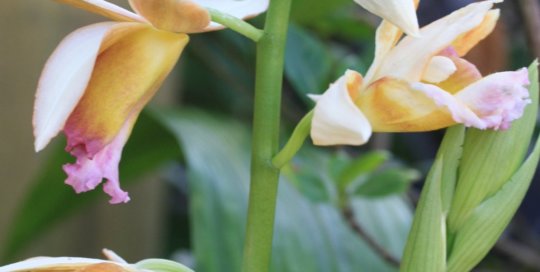Most of the permanent plantings in the conservatory hail from the tropics, a band encircling the Earth north and south of the equator with mean temperatures above 64 degrees Fahrenheit year-round. Some areas are constantly hot and wet, while others have a relatively short rainy season followed by protracted dry weather and, despite the constant heat, still others are classified simply as dry, arid or semi-arid like the Australian Outback and the Sahara Desert.
The conservatory features well over 1,000 taxa from these regions in horticulturally contrived schemes that explore themes of ethnobotany and ecology. Study these plant communities and you will find some surprising plant relationships amid the zesty, tropicalismo aesthetic.
Notable experiences in the conservatory include:
- Louteridium donnell-smithii (no common name) is an unusual member of the acanthus family from southern Mexico and Central America. Its oversized, fuzzy, heart-shaped leaves form a texturally impressive canopy near the arbor and on the southern wall of the conservatory. This night-flowering shrub blooms in February and March featuring curious, flesh-toned and bucket-shaped flowers pollinated by bats in the wild.
- Acalypha hispida (chenille plant), with its long fuzzy flowers belongs to the spurge family, the Euphorbiaceae, along with the Christmas poinsettia and the many different crotons whose leaves bring color to the conservatory all year.
- The traveler’s palm is not a true palm but rather a member of the bird-of-paradise family named Ravenala madagascariensis. There are two theories about the common name–one is that rain collects in the leaf stalk sheaths and could quench the thirst of a weary traveler; the other, more likely theory is that the leaf fans orientate themselves east-west and could act as a compass.
- A tumbling waterfall in the conservatory attracts visitors of all ages, along with the koi. The desert garden features the spiny, poky, and prickly leaves of cacti and other succulents, including familiar Agave (century plants), Euphorbia (crown of thorns), Crassula (jade plant) and a number of woody “lilies”–plants like Yucca, to name a few. Stewarded by a loyal troop of volunteers who genially call themselves “Desert Diggers,” the desert garden continues to flourish as an educational example of the many fascinating plants that populate arid spaces of the world.
Gallery
(Click to enlarge)

